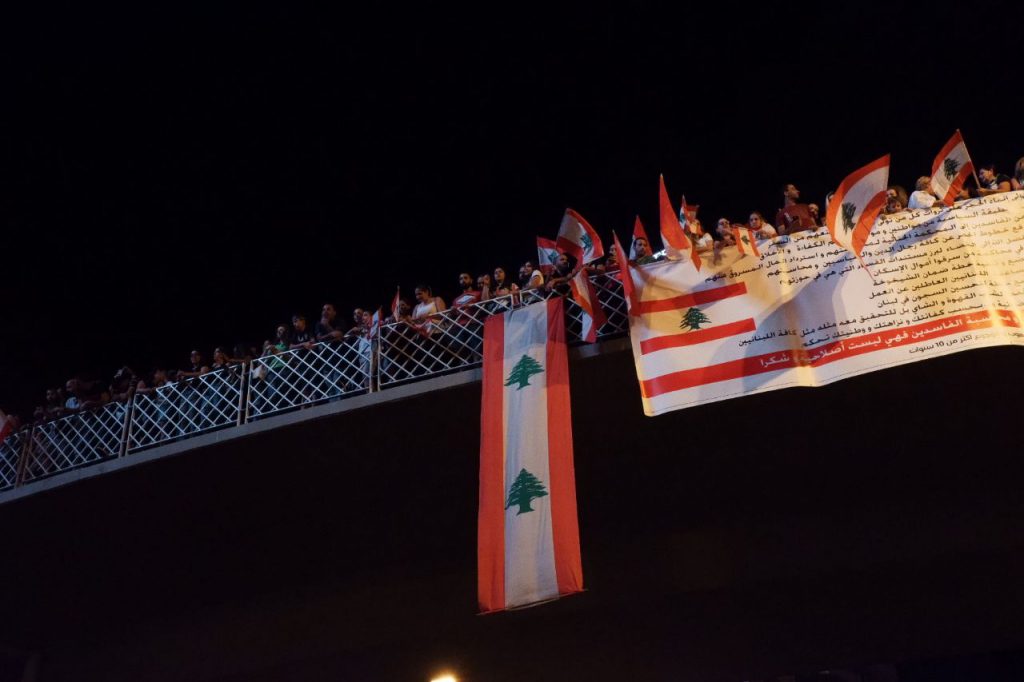The Lebanese people are familiar with taking to the streets. The country has seen multiple protests in the last 15 years, starting with the 2005 Cedar Revolution that sought the withdrawal of Syrian troops in Lebanon and the end of Syrian influence in Lebanese politics. This revolution brought the Lebanese people closer together than ever before. Shi’a, Sunni, Christian and Druze held hands in an effort to show Lebanese unity. And it worked. Syrian troops completely withdrew. The country chanted in unison, but their voices gradually faded until they let go of each others’ hands.
Sectarian tensions were expressed through sit-ins, protests, political unrest and assassinations. The more people experienced hardship, the more they would rely on their religious leaders. Fundamentalism of one party generates a similar response in its opposition, creating like a loop that would never end.
Fast forward 28 years and power is still divided up among sectarian lines.The war may have ended in 1990, yet sectarianism hasn’t. Today the majority of the population is under 35, and has barely witnessed the war, if at all. They’ve grown up entrenched in this system, and have seemingly developed the same habits as their parents. However, they are the main victims of this failing system.
The economic recession in Lebanon has reached such magnitude that these people have awoken. Those that seemed irreversibly brainwashed started questioning their allegiance. Suffering from the remnants of a war they’ve never fought, the people have had enough. It is no longer about sects, but about Lebanon, about basic human rights. Across religion, from the upper-class youth pushed to emigrate, to the lower-class unemployed and hungry, everyone is fed up.
These men and women have woken up to the lies they were being sold. Their sectarian leaders had formed a corrupt plutocracy. They had abandoned their people to hold onto their wealth and power, and this has finally come to light. The confessional system in Lebanon is meant to give each sect proper representation. It was conceived so that none got left behind, but the political elite has left the people behind.
This revolution is the most drastic step ever taken by the Lebanese. The evidence is in the means of revolt. Lebanon’s regions tend to be religiously divided, and the chosen spots for demonstrations tell a significant story. Historically, mass protests were concentrated in Downtown Beirut, and people would travel across the country to join the cause. This approach meant that protesters held the “Other” responsible. Traveling from Jounieh, Nabatiye, Tripoli or Chouf to Beirut pinpoints the problem as coming from beyond their communities. They continued to defer blame onto other sects and other leaders, a pattern repeated since the civil war.
This time, people have chosen to protest in their own neighbourhoods. Simultaneously, Christians, Shi’a, Sunni and Druze have met in their respective town squares, and accused their respective representatives. For once, it is no longer about blaming the Other, but about cleaning up their own backyards. TV screens are awash with images of Shi’a women contesting Nabih Berri, Sunni boys calling for Hariri’s resignation, and of course, the notoriously catchy derogatory chant against the Christian Free Patriotic Movement (FPM) leader Gebran Bassil.
The people woke up to the reality that their leaders are in it for themselves. Their aim is not to represent the country as a whole, nor to support their followers. Lebanon is calling for a technocratic system to replace that sectarian curse. At last, people are demanding that a qualified government rule their country with competence and integrity. Off with the tribal leaders. It’s been a Hela Hela Hela Hela long time coming.
